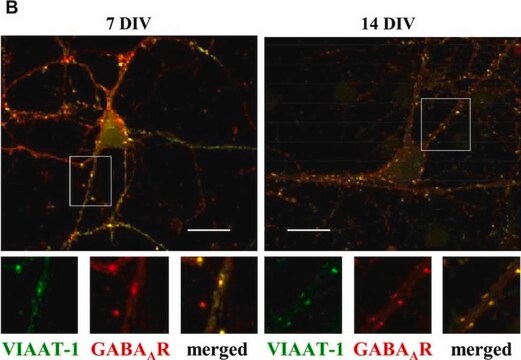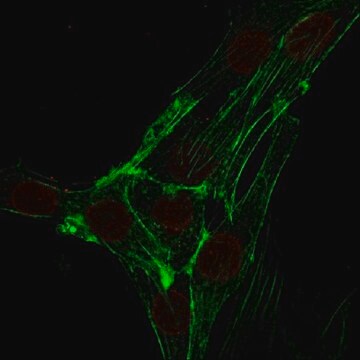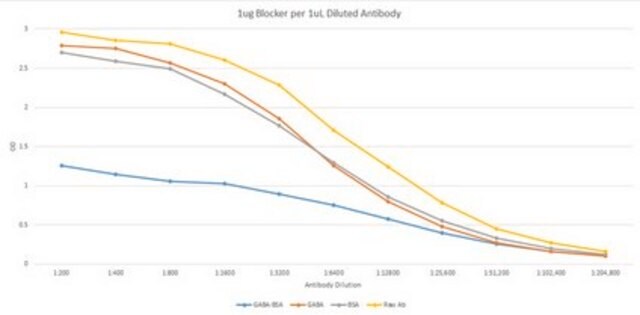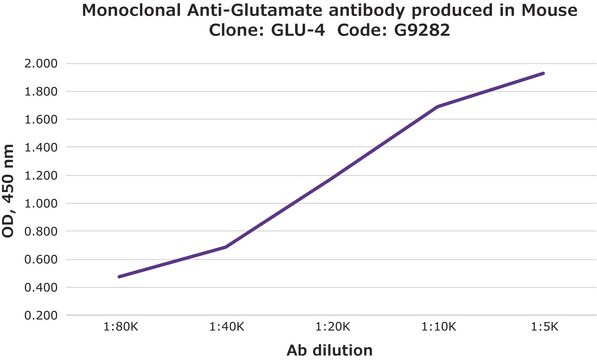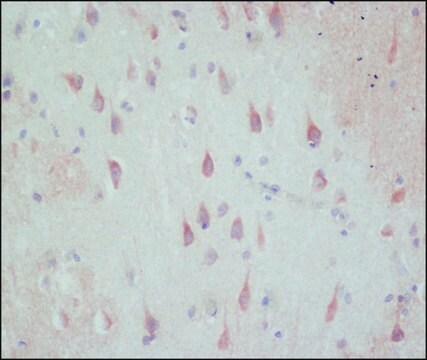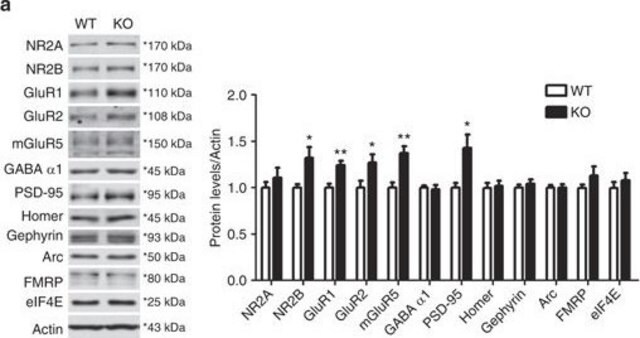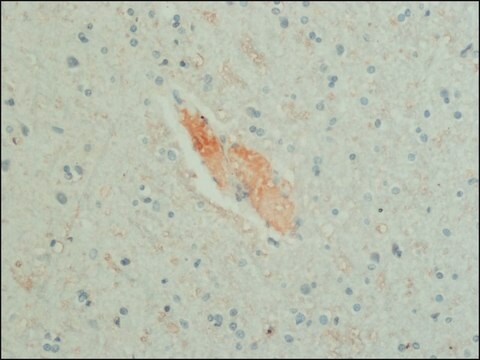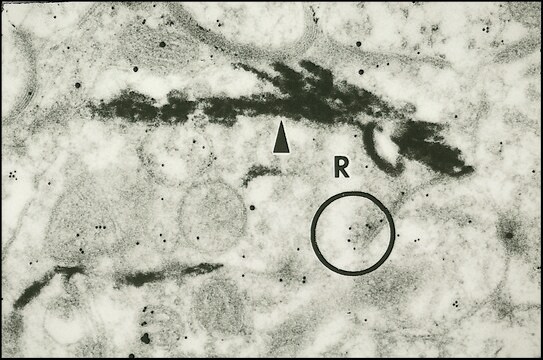MABN875
Anti- GABAA Antibody γ2 Subunit, clone KC4-8A7
clone KC4-8A7, from mouse
Synonim(y):
Gamma-aminobutyric acid receptor subunit gamma-2, GABA(A) receptor subunit gamma-2, GABAA γ2 Subunit
About This Item
Polecane produkty
pochodzenie biologiczne
mouse
Poziom jakości
forma przeciwciała
purified immunoglobulin
rodzaj przeciwciała
primary antibodies
klon
KC4-8A7, monoclonal
reaktywność gatunkowa
rat, bovine, human, mouse
metody
ELISA: suitable
immunohistochemistry: suitable (paraffin)
immunoprecipitation (IP): suitable
western blot: suitable
izotyp
IgG2aκ
numer dostępu NCBI
numer dostępu UniProt
Warunki transportu
wet ice
docelowa modyfikacja potranslacyjna
unmodified
informacje o genach
human ... GABRG2(2566)
Opis ogólny
Specyficzność
Immunogen
Zastosowanie
Neuroscience
Developmental Neuroscience
Western Blotting Analysis: 1.0 µg/mL from a representative lot detected GABAA γ2 Subunit in 10 µg of human brain tissue lysate.
Immunohistochemistry Analysis: A 1:250 dilution from a representative lot detected GABAA γ2 Subunit in human cerebral cortex tissue.
Western Blotting Analysis: A representative lot detected human GABAA gamma2 subunit cytoplasmic domain GST fusion protein, as well as endogenous GABAA gamma2 subunit in purified bovine brain GABAA receptor complex (Fernando, L.P., et al. (1995). J Neurochem. 64(3):1305-1311).
Immunoprecipitation Analysis: A representative lot immunoprecipitated GABAA receptor complex from rat cerebral cortex membrane extracts, as well as purified bovine brain GABAA receptor complex as measured by ligand-binding activity associated with the immune complex (Fernando, L.P., et al. (1995). J Neurochem. 64(3):1305-1311).
ELISA Analysis: A representative lot detected human GABAA gamma2 cytoplasmic domain GST fusion protein, but not GST (Fernando, L.P., et al. (1995). J Neurochem. 64(3):1305-1311).
Jakość
Western Blotting Analysis: 1.0 µg/mL of this antibody detected GABAA γ2 Subunit in 10 µg of rat brain tissue lysate.
Note: For Western blotting analysis, DO NOT BOIL samples prior to electrophoresis. After dissociating receptor complex with SDS sample buffer, remove non-solublized material by centrifugation.
Opis wartości docelowych
Postać fizyczna
Przechowywanie i stabilność
Inne uwagi
Oświadczenie o zrzeczeniu się odpowiedzialności
Nie możesz znaleźć właściwego produktu?
Wypróbuj nasz Narzędzie selektora produktów.
Kod klasy składowania
12 - Non Combustible Liquids
Klasa zagrożenia wodnego (WGK)
WGK 1
Temperatura zapłonu (°F)
Not applicable
Temperatura zapłonu (°C)
Not applicable
Certyfikaty analizy (CoA)
Poszukaj Certyfikaty analizy (CoA), wpisując numer partii/serii produktów. Numery serii i partii można znaleźć na etykiecie produktu po słowach „seria” lub „partia”.
Masz już ten produkt?
Dokumenty związane z niedawno zakupionymi produktami zostały zamieszczone w Bibliotece dokumentów.
Nasz zespół naukowców ma doświadczenie we wszystkich obszarach badań, w tym w naukach przyrodniczych, materiałoznawstwie, syntezie chemicznej, chromatografii, analityce i wielu innych dziedzinach.
Skontaktuj się z zespołem ds. pomocy technicznej